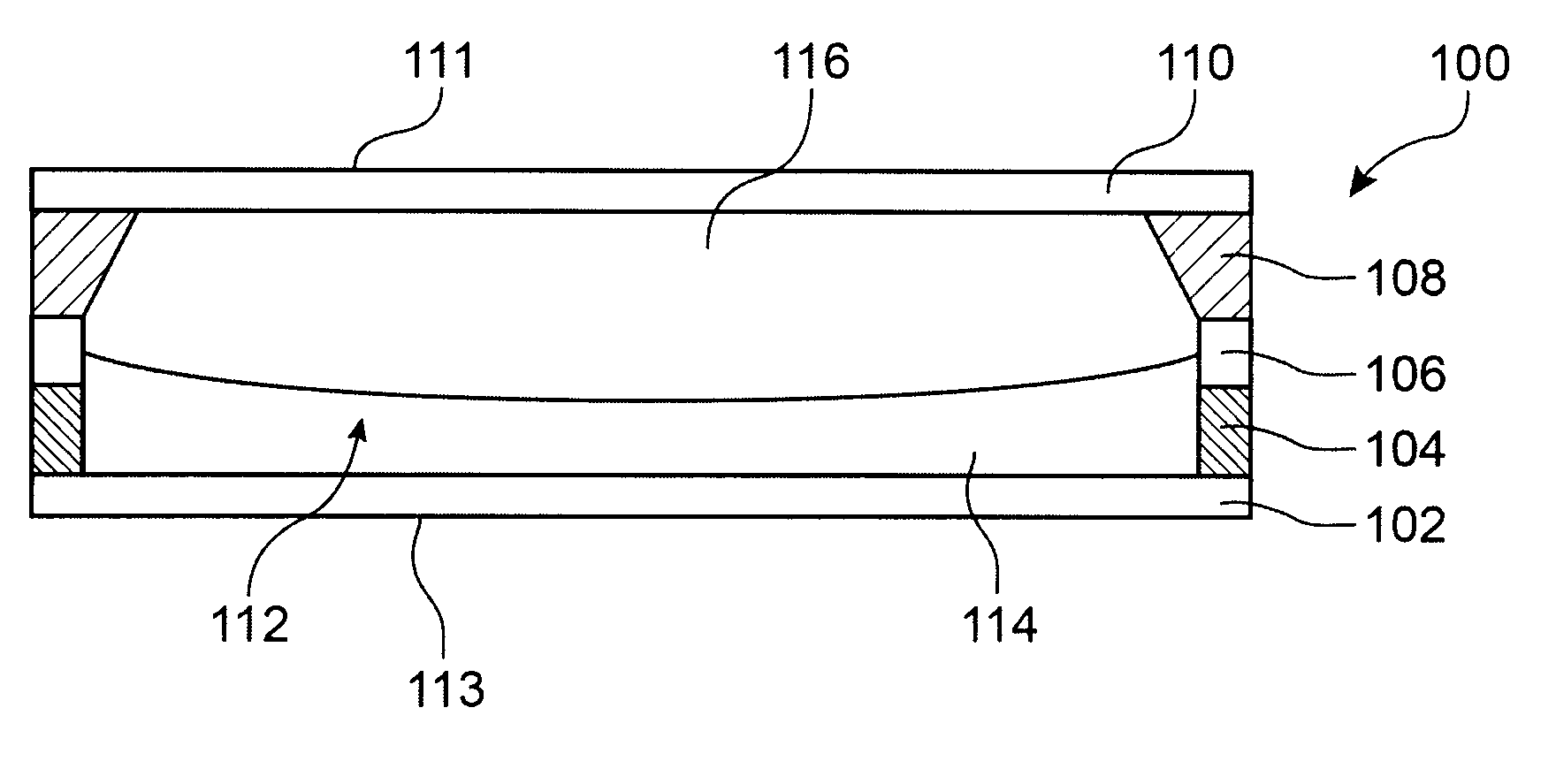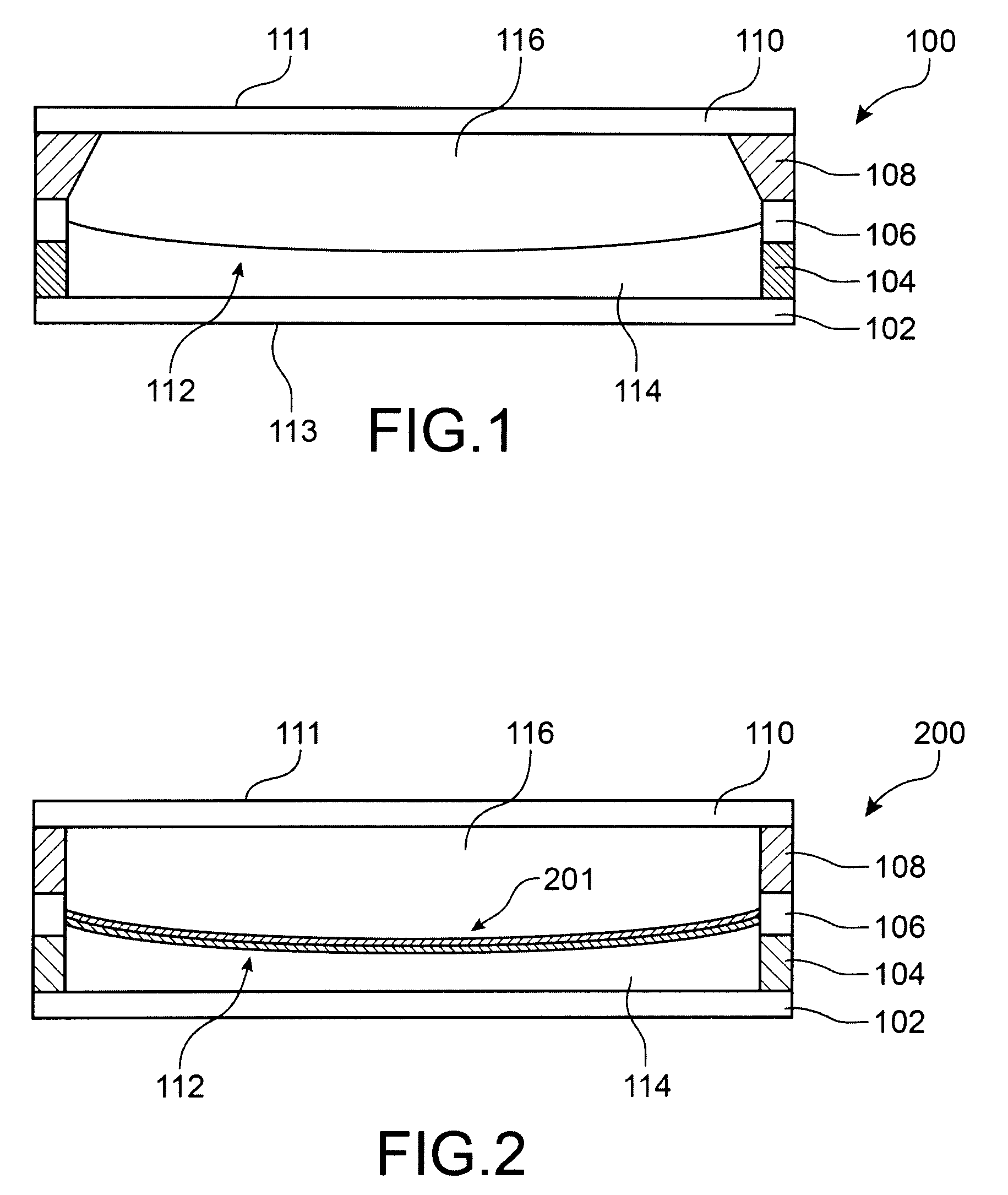Photovoltaic cell with non-miscible electrolytes
a photovoltaic cell, non-miscible technology, applied in the field of photovoltaic cells, can solve the problems of low electrical conductivity, low efficiency of cells in particular, and high cos
- Summary
- Abstract
- Description
- Claims
- Application Information
AI Technical Summary
Benefits of technology
Problems solved by technology
Method used
Image
Examples
first embodiment
[0046]FIG. 1 is a cross-section view of a photovoltaic cell with non-miscible electrolytes
second embodiment
[0047]FIG. 2 is a cross-section view of a photovoltaic cell with non-miscible electrolytes according to a
[0048]Identical, similar or equivalent parts of the various figures described below have the same numeric references for the sake of consistency between the figures.
[0049]In order to make the figures easier to read, the various parts shown in the figures are not necessarily done so according to a uniform scale.
[0050]The various possibilities (alternatives and embodiments) should be understood as not being exclusive of one another and can be combined with one another.
PUM
 Login to View More
Login to View More Abstract
Description
Claims
Application Information
 Login to View More
Login to View More - R&D
- Intellectual Property
- Life Sciences
- Materials
- Tech Scout
- Unparalleled Data Quality
- Higher Quality Content
- 60% Fewer Hallucinations
Browse by: Latest US Patents, China's latest patents, Technical Efficacy Thesaurus, Application Domain, Technology Topic, Popular Technical Reports.
© 2025 PatSnap. All rights reserved.Legal|Privacy policy|Modern Slavery Act Transparency Statement|Sitemap|About US| Contact US: help@patsnap.com


